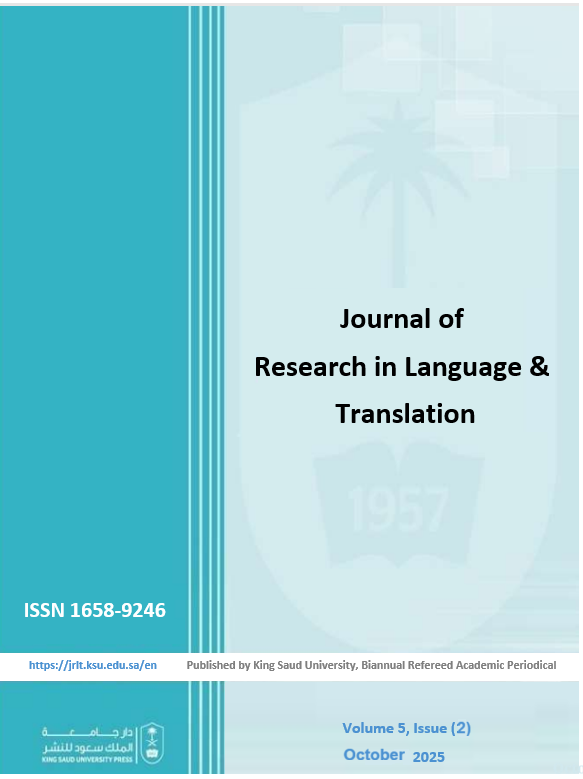Verbal gender agreement in Standard Arabic: A comparison between Arabic heritage speakers and French-speaking L2 learners
DOI:
https://doi.org/10.33948/JRLT-KSU-5-2-4Keywords:
Arabic heritage, verbal gender agreement , noun class, Standard Arabic, FrenchAbstract
This study examined second language (L2) acquisition of verbal gender agreement with third-person singular subjects in Standard Arabic by comparing the linguistic performance of Arabic heritage speakers (bilingual in spoken Arabic and French) with French-speaking L2 learners. The study also examined the effects of nominal properties (gender and noun class) on verbal gender agreement acquisition. A grammaticality judgment task was used to assess sensitivity to verb-subject gender agreement violations. The study sample included 12 Arabic heritage speakers, 15 L2 learners, and 25 Arabic controls. The results demonstrated superior linguistic performance for Arabic heritage speakers compared with L2 learners. Unlike in French, verbal gender agreement with singular subjects is similarly inflected in spoken and standard Arabic. Therefore, Arabic heritage speakers benefit from a positive transfer from the spoken variety. The Arabic heritage speakers’ judgments were comparable to those of Arabic controls. Both groups performed with a higher accuracy on sentences containing human subjects than on those containing animal subjects. In contrast, L2 learners did not display the same noun class effect but rather showed a gender effect that interacted with grammaticality. The feminine verbal form was tolerated under both the masculine and feminine conditions. These findings suggest that learning a standard variety can differ from learning a foreign language, particularly when linguistic properties overlap between standard and spoken varieties. This study also demonstrates the varying semantic effects of human and animal nouns on verbal gender agreement in Standard Arabic, indicating the influence of factors such as the morphological similarity of masculine and feminine forms.

